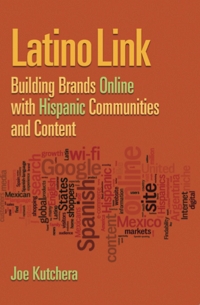This article originally appeared on MediaPost and is an early preview of Latino Link: Building brands online with Hispanic communities and content from Paramount Books.
How can you grow e-commerce by targeting the 25 million Hispanics online? Let’s look at a case study comparing two major retailers and how they managed their “U.S. Hispanic” sites. We can learn a lot from their successes and mistakes.
The Home Depot vs. Best Buy
The Home Depot launched its Spanish-language e-commerce site for U.S. Hispanics in early 2009, hoping to reach a new audience and grow a new profit center. After only four months, The Home Depot shut the site down because many of its visitors came from Latin America and Spain. The site was set up to accept credit cards only from the U.S. Nevertheless, Spanish-language consumers internationally very clearly communicated their interest in home improvement content online and e-commerce by visiting The Home Depot’s “U.S. Hispanic” site.
Since The Home Depot has 75 stores in Mexico, many Mexicans already knew the brand and easily found the site via search. They were surely pleased that the retailer was “speaking their language” online. Unfortunately, The Home Depot’s organizational structure (U.S. versus Mexican business units) clashed with the international, borderless nature of the Internet and its “U.S. Hispanic” e-commerce venture failed.
When Best Buy launched its U.S. Hispanic e-commerce site (in Spanish), it found the same situation as The Home Depot had. Many visitors from outside the U.S. visited the site. In contrast, Best Buy embraced visitors from Mexico and Latin America, encouraging them to buy online with foreign credit cards and pick up in-store when they visited the U.S. While the site generated e-commerce sales, Best Buy also heard from their store associates that many U.S. Hispanics printed out pages from the site and visited and made purchase in-store with a better understanding about what they wanted.
Win-Win vs. Lose-Lose
How could one retailer so completely embrace one of the greatest benefits of the Internet — its global distribution — and create a U.S. Hispanic and international e-commerce success story while another rejected it?
Best Buy has created a win-win by building sales with U.S. Hispanics and Spanish-speakers internationally. The Home Depot, on the other hand, has lost not one but two e-commerce opportunities by cutting off service online both to U.S. Hispanics and Latin Americans. Would The Home Depot consider shutting down its English-language e-commerce site as its international traffic grows?
Consumers Always Want Lower Prices and Good Quality
In addition to e-commerce sales, any retailer with stores along the U.S.-Mexico border knows that many Mexicans shop in the U.S. for groceries and especially high-ticket items. Why? With higher taxes and less competition, prices in Mexico are noticeably higher.
Compare prices for identical products on Dell.com vs. Dell.com.mx, for example, and you’ll see why Mexicans cross the border to shop: Consumers always shop where prices are lower and the quality is the same or better. The World Wide Web will only bring greater transparency to the shopping experience globally in the years ahead.
Chris Emme, director of sales for Yahoo en Español, says, “I know when relatives or friends of my wife, Leticia, are visiting as boxes arrive at my apartment from the Gap, J. Crew, Disney, and Amazon. My wife’s family and friends from Argentina find that the bargains and quality of products in the U.S. far exceed the products they can buy in Argentina.” Millions of other consumers shop like Leticia’s family and friends.
Tips for Growing E-Commerce with U.S. Hispanics
In conclusion, ask your colleagues the following questions to grow your U.S. Hispanic e-commerce revenues:
1) Is your Spanish-language site/pages optimized for Spanish-language search terms?
2) Do your media partners provide you with U.S.-only impressions? Or are your search or banner ads served in front of international visitors?
3) What percentage of your domestic U.S. Hispanic sales actually come from Spanish-language foreigners like Chris Emme’s wife or Mexicans crossing the U.S.-Mexico border?
4) Are you measuring international sales among Spanish-speakers via credit card statistics or couponing programs?
5) How can you promote your e-commerce site or physical stores virtually to strategically grow sales along the U.S.-Mexico border?
6) Do you have a “welcome mat” or pop-up window for international visitors on your U.S. web site funneling them to the right pages for international sales?
By listening and responding to the millions of visitors to U.S. Hispanic web sites from abroad, you can turn your international web site into millions of dollars of new e-commerce business.
![Reblog this post [with Zemanta]](https://img.zemanta.com/reblog_e.png?x-id=3c592217-de06-4b88-b33c-a1515ce307de)






